POPEYE’S NEEDS
Can’t Have It
Popeye ain’t the only bloke who’s gotta have spinach on tap whenever the urge strikes him. Some gardeners have similar needs — not me, though, who, come summer, gravitates to peppers, corn, tomatoes, and cucumbers. And being gardeners, you spinach lovers want freshly picked spinach, not that wan stuff that Popeye squeezes out of a can.

No matter how good a gardener you are, though, you can’t grow spinach this time of year (a statement that will no doubt be challenged by some reader who IS growing spinach now). Spinach is sensitive to cycles of night and day, and our summer’s short nights induce the plants to send up seedstalks, then die, instead of growing the succulent, broad leaves they do in spring and fall.
Any reader claiming to harvest spinach right now from his or her garden either lives in the tropics, where nights never shorten to less than twelve hours, or far south of the equator.
I guess if you lived around here and really loved spinach, you could throw an opaque blanket over the plants for a period each evening or morning, sparing them the two weeks with ten hours of daily darkness that induces seedstalk formation.
Spinach Kin, Botanical & Gustatory
Covering plants or moving far south seems more trouble than spinach justifies, especially because you Popeye wannabe’s could just plant a spinach substitute instead. These ersatz spinaches all bear well despite the heat and long days of our summers.
Some spinach substitutes are actually close relatives of the real thing. A familiar one, perhaps too familiar, is lamb’s quarters (Chenopodium spp.) a very common garden weed. I wish I liked the flavor; many people do.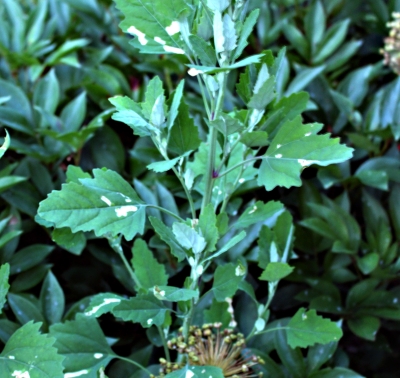
Redroot pigweed (Amaranthus retroflexus) is also a relative and, as the name says, is also a weed. You’re probably also already “growing” both plants, inadvertently. 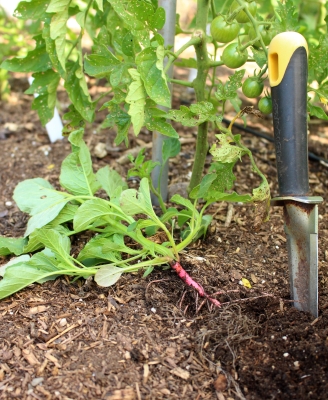 Based on my distaste for lamb’s quarters, I never thought redroot pigweed was worth a try. That is, until a Korean friend presented me with a jar of home made redroot pigweed kimchi. Delicious! I’ve since learned to enjoy the plant as much as any other “green.” For best eating, harvest the leaves while the plants are still young.
Based on my distaste for lamb’s quarters, I never thought redroot pigweed was worth a try. That is, until a Korean friend presented me with a jar of home made redroot pigweed kimchi. Delicious! I’ve since learned to enjoy the plant as much as any other “green.” For best eating, harvest the leaves while the plants are still young.
Redwood pigweed and lamb’s quarters’ weedy nature is a plus when you grow them for food because their unique metabolism lets them thrive while most other plants are gasping in summer heat and dryness. Their “C4” metabolism makes them more efficient at latching onto carbon dioxide so they can keep their stomates, holes in leaves through which water exits and air enters, open. The plants are less likely to dry out.
(The designation C4 is because the first photosynthetic product is four-carbon oxaloacetic acid rather than the usual three-carbon phosphoglycerate of C3 plants. Corn and crabgrass are also C4 plants; not so for Kentucky bluegrass.)
Another spinach relative common in gardens, this one more benignly so, is Swiss chard. Chard is among the few “greens” — along with kale, collards, and another “spinach” soon to be mentioned — that thrive in cool as well as warm weather. 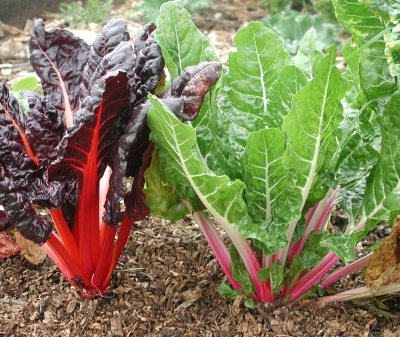 Sow chard seeds in early spring and start picking the outer leaves as soon as they are large enough to eat. Young ones keep growing from the center of the plant, which keeps bearing on into fall, often surviving winter even here in zone 5.
Sow chard seeds in early spring and start picking the outer leaves as soon as they are large enough to eat. Young ones keep growing from the center of the plant, which keeps bearing on into fall, often surviving winter even here in zone 5.
Further Afield “Spinaches”
Not even distantly related to spinach, but with “spinach” in their names, are Malabar spinach and New Zealand spinach. Sow Malabar spinach (Basella alba) seeds indoors a few weeks before the last spring frost and New Zealand spinach (Tetragonia tetragonioides), which thrives in cool as well as hot weather, outdoors as soon as the soil thaws in spring. Be patient waiting for New Zealand spinach seeds to germinate; they are slow and erratic in doing so.
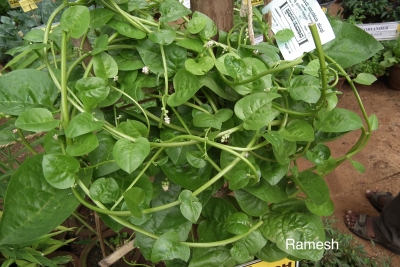
Malabar spinach
In its native tropical haunts, Malabar spinach is a perennial vine that clambers up to thirty feet in height. Around here, grow it as an annual, where it will climb four to six feet before cut off by cold weather. Giving it a trellis keeps the leaves off the ground and free of dirt, and makes a decorative, edible screen. Especially decorative, with purple stems and dark green leaves, is the variety Rubra.
In contrast to Malabar spinach, New Zealand spinach stays earthbound, sending up just a short upright shoot from whose base sprawls ground hugging shoots. Unrestrained, a single plant might gobble up a square yard of ground.
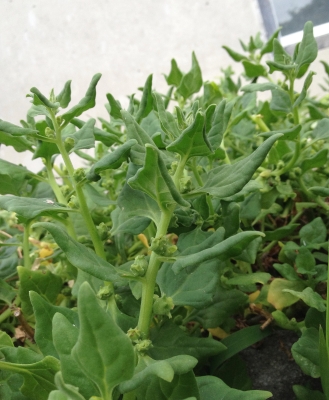
New Zealand spinach
Pluck off the fleshy, round, young Malabar spinach leaves or the shoot tips and leaves of New Zealand spinach whenever the urge for spinach strikes you, toot, toot. New Zealand spinach is good raw in salads, as well as cooked.
Rounding out summer’s edible greenery is purslane, this one tolerating heat and drought because of its fleshy, water storing leaves, and yet another unique metabolism, Crassulean Acid Metabolism (“CAM”).
CAM plants “work the night shift, opening their pores only in darkness, when little water is lost, and latching onto carbon dioxide at night by incorporating it into malic acid, which is stored until the next day. Come daylight, the pores close up, conserving water, and malic acid comes apart to release carbon dioxide within the plant, to be used, with sunlight, to make energy.” (Quote from my book The Ever Curious Gardener: Using a Little Natural Science for a Much Better Garden.)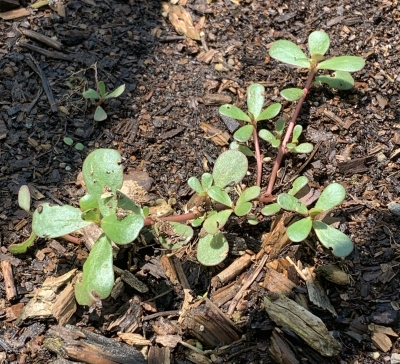
I’ve actually tasted the result of this plant’s metabolic trick in summer by nibbling a purslane leaf at night and then another one in the afternoon. Malic acid makes the night-harvested purslane more tart than a leaf harvested in daylight. Unfortunately for me, I enjoy neither the flavor nor the texture (slimy?) of purslane, unless it’s well camouflaged with oil, vinegar, olives, and feta cheese, perhaps with a few young leaves of redroot pigweed.
Now if only Popeye could plant his feet on terra firma long enough to plant a garden, he wouldn’t have to settle for that canned spinach.


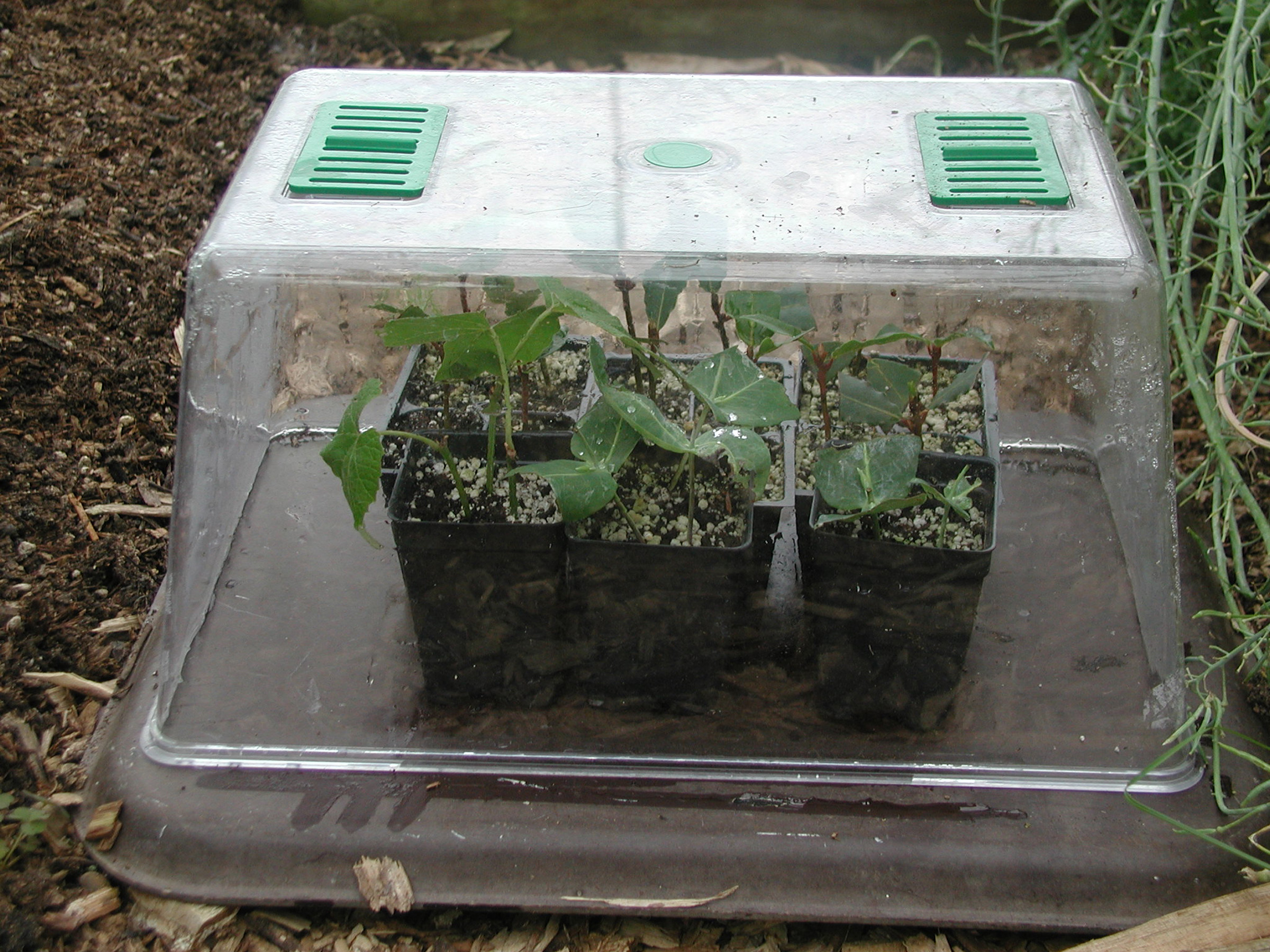
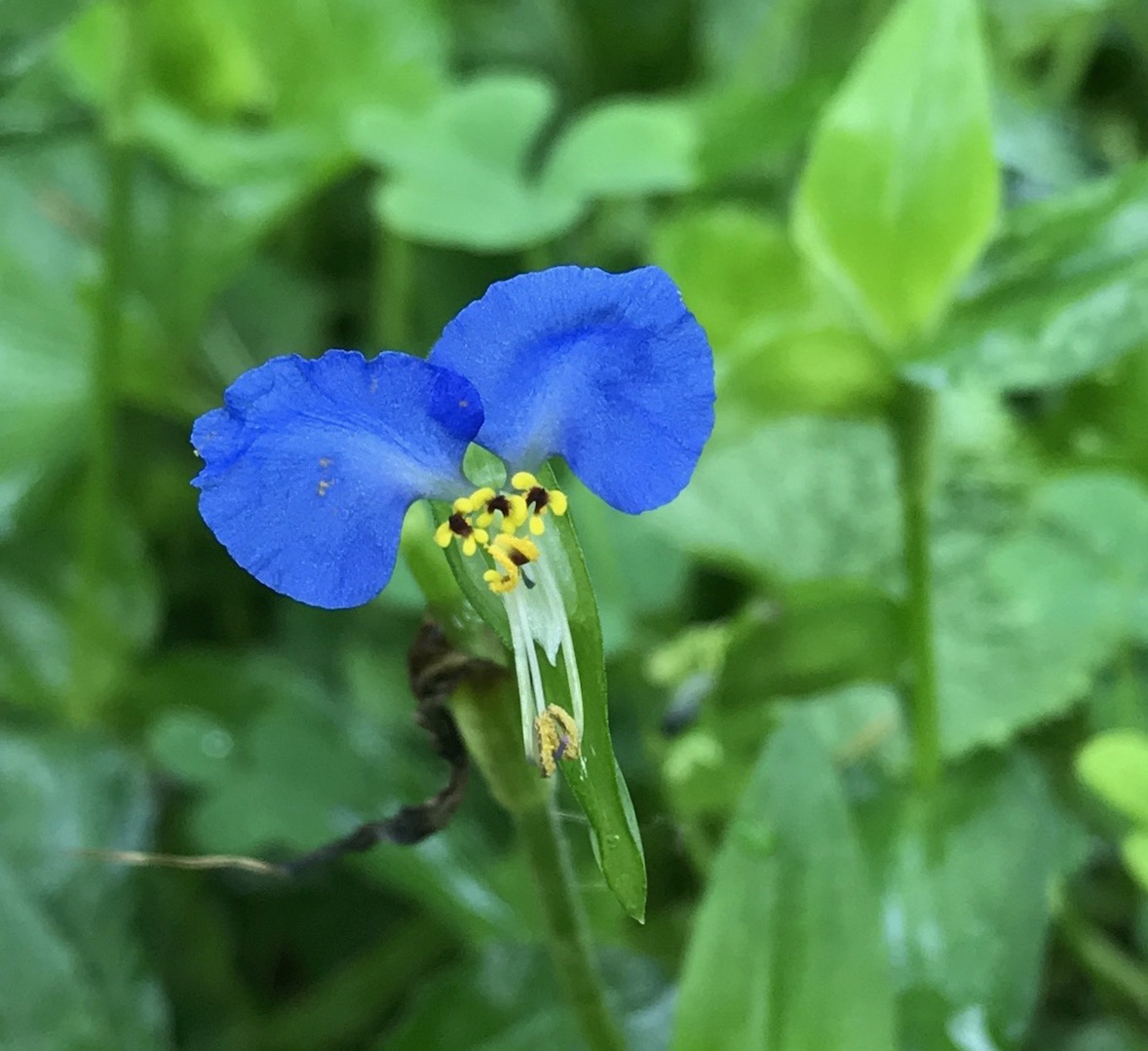
I started some Hablitzia Tamboides from seed a couple of years ago and it is really thriving In a perennial area of my garden. I like the flavor of the spinach-like greens Better than the other that I have tried. Also known as Caucasian mountain spinach.
https://www.fedcoseeds.com/seeds/caucasian-mountain-spinach-eco-perennial-greens-2590
I agree. I grew it and it died one winter. But I’m going to grow it again.
Nice post Lee! Thank you. How do you minimize the slimy nature of malabar spinach?
I have to admit that I’ve never grown or eaten it. As I wrote, I don’t long for spinach in summer when I have peppers, cucumbers, and tomatoes.
Thanks for this. Now I finally understand why my spinach seedlings were bolting when I tried to grow them indoors under plant lights that were on for 16 hrs each day. We tried several alternatives to spinach and malabar is our favorite.
I was fascinated by your spinach blog! Thank you. I grow Okinawin spinach here in Hawaii and it tolerates the heat perfectly
I’m growing Malabar Spinach for the first time this year although my plants are still bearing only a few leaves. They are doing welk.
I love spinach so much I have tried to grow Malabar spinach but I struggle to get it to germinate for some reason any tips?